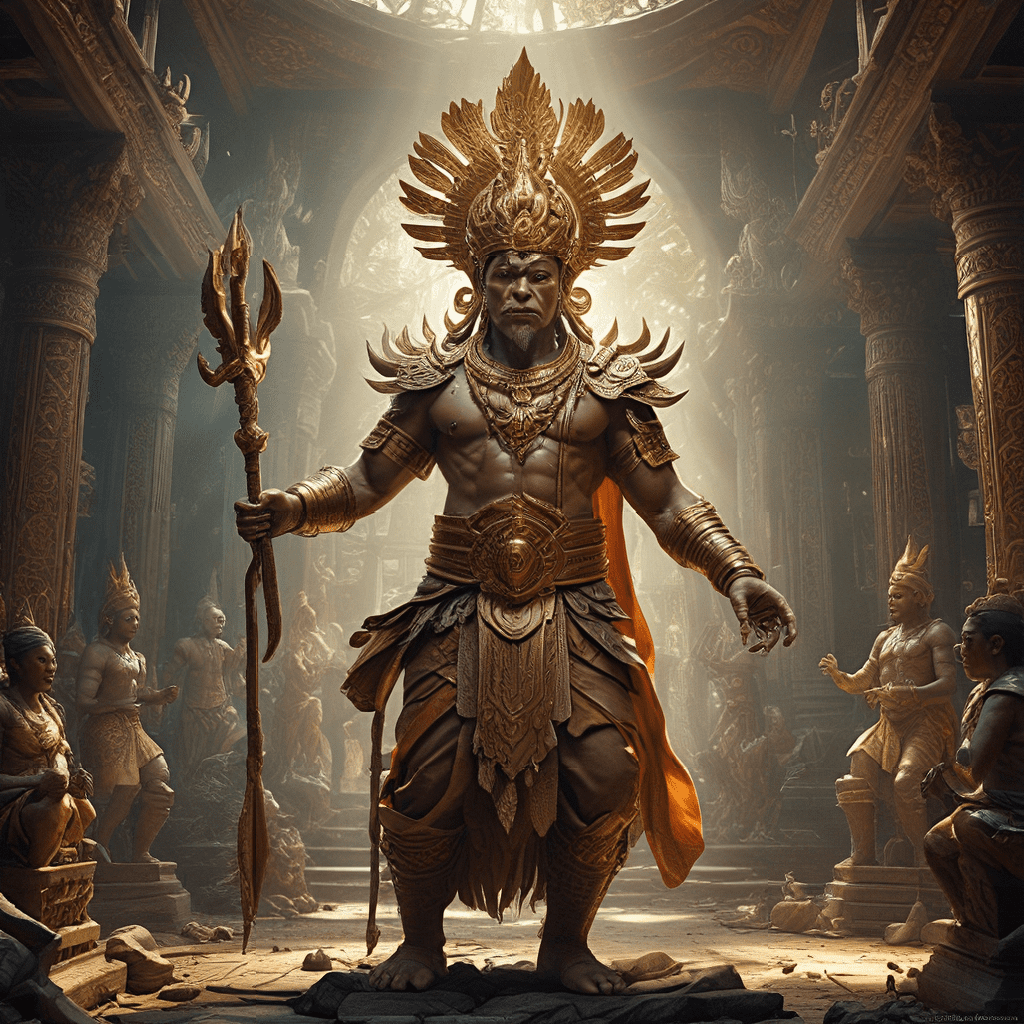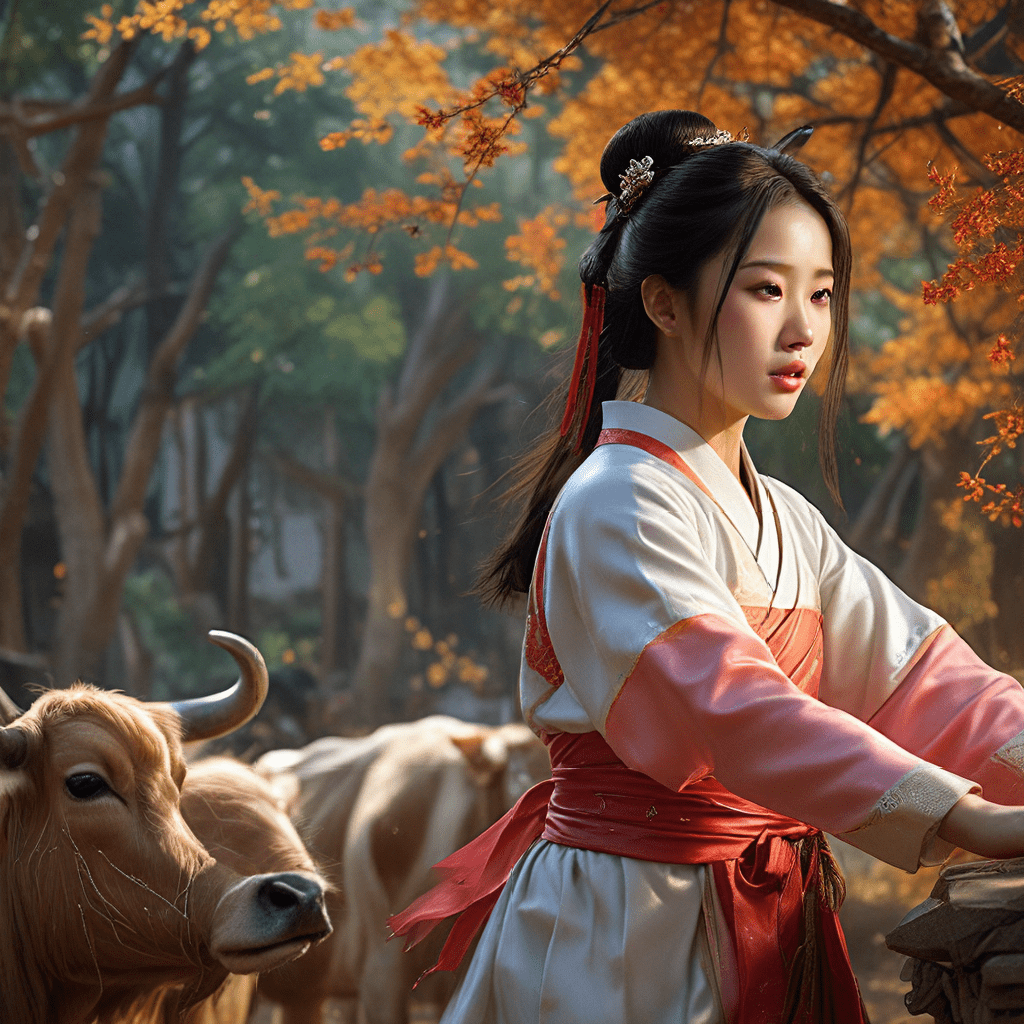Filipino Mythology: A Tapestry of Beliefs
The Philippines, an archipelago of over 7,000 islands, boasts a rich and diverse cultural heritage. Deeply woven into this fabric is Filipino mythology, a collection of stories, legends, and beliefs about the origins of the world, the nature of the cosmos, and the powers that govern human life. These myths are an essential window into the Filipino soul, offering insights into their values, beliefs, and understanding of the world.
Beyond the colorful stories, Filipino mythology acts as a powerful tool for cultural transmission, preserving ancient wisdom and traditions through generations. These myths are more than just entertaining tales; they offer a framework for understanding the natural world, navigating social relationships, and finding meaning in life.
The Cosmic Dance: Creation Myths and the Universe
Filipino mythology brims with captivating creation myths, each weaving a unique tapestry of the universe's genesis. These stories often feature powerful deities, shaping the world and its inhabitants from chaos to order. One popular myth recounts the story of the primordial couple, Bathala and his wife, who gave birth to the first humans. In another, the universe is born from a giant egg, hatched by the deity, Malakas.
These creation stories showcase the Filipinos' deep connection to nature. The elements – the earth, the sky, the sea, and the mountains – are imbued with spiritual significance, often personified as deities who play vital roles in the creation myth.
The Supreme Being: Bathala and the Pantheon
At the heart of Filipino mythology stands Bathala, the supreme deity, revered as the creator and ruler of the universe. Bathala, also known as Bathalang Maykapal, embodies power, wisdom, and justice. He is credited with shaping the heavens and the earth, and his authority extends over all life forms.
Beyond Bathala, a rich pantheon of gods and goddesses populate the Filipino mythological landscape. Each deity governs a specific domain, influencing various aspects of human life. For example, Lalahon, the goddess of fertility, governs harvests and ensures the prosperity of the land. Mayari, the goddess of the moon, controls the night and influences the tides. These deities, with their unique powers and personalities, contribute to the vibrant tapestry of Filipino mythology.
The Realm of Spirits: Anitos and Diwata
Filipino mythology recognizes the existence of spirits, both benevolent and malevolent, who inhabit the world alongside humans. These spirits, known as "anitos" and "diwata," play a significant role in shaping human lives, influencing fortune, and even determining the fate of individuals.
The "diwata" are benevolent spirits, often associated with nature and beauty. They are believed to reside in mountains, forests, and bodies of water, protecting and guarding the natural world. They are often depicted as graceful and ethereal beings, often associated with music, dance, and art. On the other hand, "anitos" encompass a diverse range of spirits, some benevolent, some malevolent. They are often associated with ancestors or specific places and are believed to possess the power to influence both good and bad fortune.
Guardians of Nature: Diwata of Forests, Mountains, and Seas
The Filipinos' deep respect for nature is reflected in their mythology. Each natural element – mountains, forests, and seas – is believed to be inhabited and protected by powerful "diwata."
The "diwata" of the mountains are often associated with strength, wisdom, and guardianship. They are known to protect the forests and wildlife, and their presence is often felt in the form of thunder, lightning, and earthquakes. For example, the "diwata" of Mount Apo, the highest peak in the Philippines, is said to be a powerful and benevolent spirit who guards the mountain and its surroundings.
The "diwata" of the forests are often depicted as nymphs and fairies, embodying the beauty and wonder of nature. They are said to bring good fortune to those who respect the forest and its creatures. The "diwata" of the seas are known as "Sirenas" or mermaids, renowned for their beauty and enchanting voices. They are said to guard the oceans and protect sailors from harm.
These "diwata" serve as guardians of the natural world, reminding Filipinos of the importance of respecting and preserving the environment.
The Cycle of Life and Death: Gods of Death, Fertility, and the Underworld
Filipino mythology acknowledges the cyclical nature of life and death, and it features deities who govern these transitions. One of the most prominent figures is Sidapa, the god of death, often portrayed as a dark and imposing figure who guides souls to the underworld. Sidapa is also associated with the cycle of rebirth, ensuring that life continues even after death.
Another prominent figure is Lalahon, the goddess of fertility, who embodies the life-giving force of nature. She is often invoked for bountiful harvests, healthy children, and prosperity. Lalahon's influence extends to the realm of agriculture, ensuring the growth of crops and the abundance of food.
The underworld, known as "Kasi-lanan," is a realm ruled by the deities of death and misfortune. It's a place where souls are judged and given a final resting place. Depending on the deeds performed during their life, individuals may experience eternal peace or face punishment in the underworld.
The myths and rituals surrounding death and the afterlife highlight the Filipinos' deep respect for the cycle of life and their belief in the continuity of existence beyond the physical realm.
The Moral Compass: Gods of Justice, Truth, and Order
Filipino mythology features deities who embody justice, truth, and order, ensuring societal harmony and upholding ethical standards. One prominent figure is "Maganda," the goddess of justice, who represents fairness and balance. Her presence is invoked to ensure fairness in legal proceedings and to settle disputes between individuals.
Another important figure is "Apolaki," the god of the sun, who represents truth and order. He is often associated with the concept of "karma," where actions have consequences. Apolaki's influence is seen in the natural world, with the sun serving as a symbol of truth and justice.
These deities reinforce the importance of ethical conduct and remind Filipinos of the consequences of their actions. They underscore the emphasis on fairness, honesty, and the maintenance of social order in Filipino culture.
The Power of Storytelling: Myths, Legends, and Folk Tales
Filipino mythology thrives through storytelling, with myths, legends, and folk tales passed down through generations, preserving cultural knowledge and traditions. These stories are rich in symbolism and allegory, offering valuable lessons about life, nature, and human relationships.
Oral traditions, passed down from elder to younger generations, played a crucial role in shaping Filipino culture. Through these tales, Filipinos learned about the origins of their world, gained insights into their place in the cosmos, and understood the importance of respecting the natural world and its inhabitants.
Stories like "The Legend of Maria Makiling" and "The Story of Lam-Ang" are not only entertaining but also convey important moral values. These stories serve as cultural touchstones, connecting Filipinos to their shared heritage and reinforcing their collective identity.
The Influence of Spanish Colonization: Syncretism and Adaptation
The arrival of Spanish colonizers in the 16th century had a significant impact on Filipino mythology. While indigenous beliefs endured, they were often blended with elements of Catholicism, leading to a fascinating process of syncretism.
Deities like Bathala were sometimes equated with Christian figures like God, while local spirits were incorporated into the pantheon of saints. The Virgin Mary, for instance, became associated with the image of the "diwata" of fertility. Rituals and festivals also underwent transformation, incorporating Christian elements while retaining their indigenous roots.
This blending of beliefs created a unique hybrid tradition, showcasing the resilience and adaptability of Filipino culture. The process of syncretism highlights the complex interplay of indigenous beliefs and colonial influences, shaping the unique tapestry of Filipino mythology.
Contemporary Interpretations: The Enduring Legacy of Philippine Mythology
Today, Filipino mythology continues to be relevant, inspiring artists, writers, and filmmakers. Modern interpretations explore the rich tapestry of myths, drawing upon their symbolism and themes to create new forms of storytelling.
The enduring legacy of Filipino mythology lies in its ability to connect contemporary Filipinos to their roots, reminding them of their cultural heritage and values. These stories offer a powerful lens through which to understand the past, present, and future of Filipino identity.
Frequently Asked Questions
- What is the significance of Filipino mythology?
Filipino mythology is a rich tapestry of beliefs and stories that offer insights into Filipino culture, values, and understanding of the world.
- Who is Bathala?
Bathala is the supreme deity in Filipino mythology, considered the creator and ruler of the universe.
- What are "Anitos" and "Diwata"?
Anitos are spirits, both benevolent and malevolent, that influence human lives. Diwata are benevolent spirits often associated with nature.
- How has Spanish colonization impacted Filipino mythology?
Spanish colonization led to syncretism, blending indigenous beliefs with Catholicism, creating a unique hybrid tradition.
- How is Filipino mythology relevant today?
Contemporary interpretations of Filipino mythology continue to inspire artists, writers, and filmmakers, connecting Filipinos to their cultural heritage.




